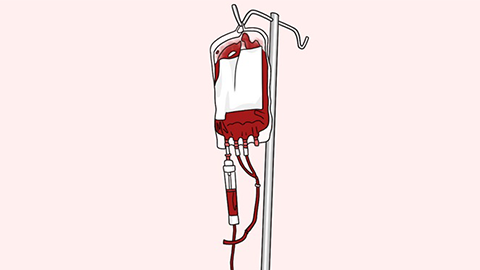What should be done if a fever reaction occurs during blood transfusion?
Fever during blood transfusion requires immediate cessation of the transfusion, monitoring of vital signs, administration of antipyretic medications as prescribed, identification of the cause of the reaction, and adjustment of subsequent transfusion plans. If fever is accompanied by chills, difficulty breathing, or a drop in blood pressure, medical staff must be notified immediately for emergency management.

1. Immediately stop the transfusion: If fever (body temperature ≥38°C) occurs during transfusion, notify healthcare providers immediately and discontinue the transfusion without delay. This prevents further infusion of blood components that may trigger or worsen the reaction.
2. Monitor vital signs: After stopping the transfusion, medical personnel will closely monitor vital signs including body temperature, pulse, respiration, and blood pressure. These are recorded every 15–30 minutes to track changes in fever and detect any additional symptoms, providing critical information for further management.
3. Administer antipyretic medication as prescribed: If body temperature is high (e.g., above 38.5°C) or significant discomfort is present, antipyretic drugs such as acetaminophen tablets should be administered strictly according to medical instructions. Self-medication is not recommended. Physical cooling methods may also be used to assist in reducing fever.
4. Identify the cause of the reaction: Healthcare providers will review transfusion records, inspect the quality of the blood product, and collect patient blood samples for laboratory testing. The aim is to determine whether the fever was caused by contaminated blood products, blood type incompatibility, or an immune reaction in the patient, so as to prevent recurrence.
5. Adjust subsequent transfusion plans: Once the cause of the fever is identified, future transfusion strategies should be adjusted accordingly. This may include using leukocyte-reduced blood products, administering prophylactic medications before transfusion, or performing transfusions slowly under close monitoring to reduce the risk of recurrent febrile reactions.
In daily care, patients should continue to monitor their physical condition after transfusion, ensure adequate rest and avoid fatigue, drink plenty of fluids to promote metabolism, and maintain a light, easily digestible diet. If fever recurs after discharge, prompt medical attention is necessary, and the patient should inform the doctor of their transfusion history to aid diagnosis.







